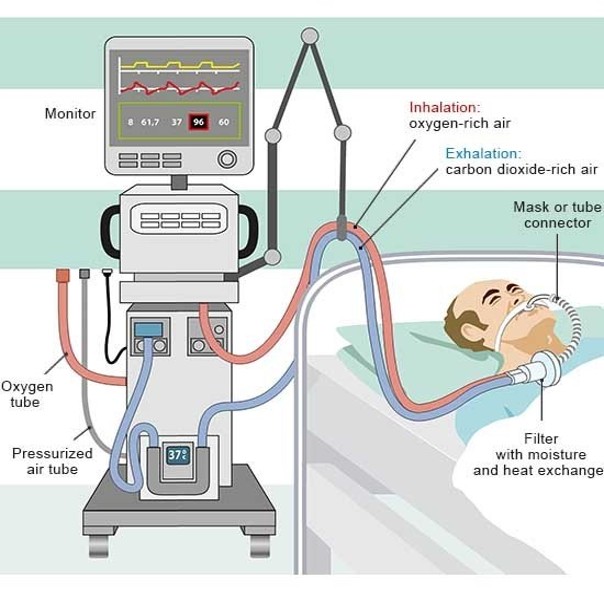
A medical ventilator—also known as a respirator or breathing machine—is a sophisticated life-support device designed to mechanically assist or fully replace a patient’s spontaneous breathing when their lungs are unable to do so effectively . It works by delivering a controlled mixture of air (often enriched with oxygen) into the lungs via a breathing tube inserted into the windpipe or, in milder cases, through a facial or nasal mask . Modern ventilators are computer-driven, allowing precise adjustment of airflow, pressure, and volume to match a patient’s respiratory needs while continuously monitoring vital parameters and ensuring safety with built‑in alarms and backup systems . Commonly used in intensive care units, during surgery, emergency transport, and even at home for long‑term respiratory support, ventilators are critical for treating respiratory failure stemming from conditions like pneumonia, acute respiratory distress syndrome (ARDS), COVID‑19, neuromuscular disorders, or anesthesia-induced breathing suppression
A medical ventilator is a sophisticated mechanical device designed to support or replace a patient’s breathing when their lungs cannot do so adequately. Here's an expanded introduction: A ventilator delivers a carefully controlled mixture of air and oxygen directly into the lungs—usually via an endotracheal tube (through the mouth or nose) or, for long-term support, a tracheostomy opening in the neck. It works by creating positive pressure to inflate the lungs with each breath, after which passive exhalation occurs as airway pressure drops. Machines warm and humidify the gas to protect delicate lung tissues and prevent drying. Internally, a ventilator is a precision control system: compressed air/oxygen is regulated through valves and sensors, and managed by a microcontroller that enforces preset parameters like tidal volume, respiratory rate, inspiratory pressure, and PEEP (positive end-expiratory pressure). These settings are tailored to patient needs—whether dictating a fixed breath volume, a target pressure, or allowing patient-triggered breaths under pressure support modes. Modern ventilators include safety features like alarms, backup power systems, and monitoring of vital data (e.g., airway pressure, flow rates, oxygenation, CO₂ levels) to ensure effectiveness and protection from complications . Ventilators are essential in diverse clinical situations—from intensive care, surgical settings under general anesthesia, emergency response, to home care for chronic conditions. While life-saving, mechanical ventilation carries risks like lung injury, infection, and muscle weakness, which necessitate meticulous monitoring, gradual weaning protocols, and robust caregiver training.
Medical Mentilator
[1]. Raichel, D.R., 2006. The science and applications of acoustics. Springer Science & Business Media.
[1]. Medical Ventilator.
